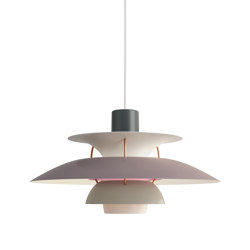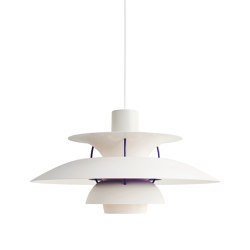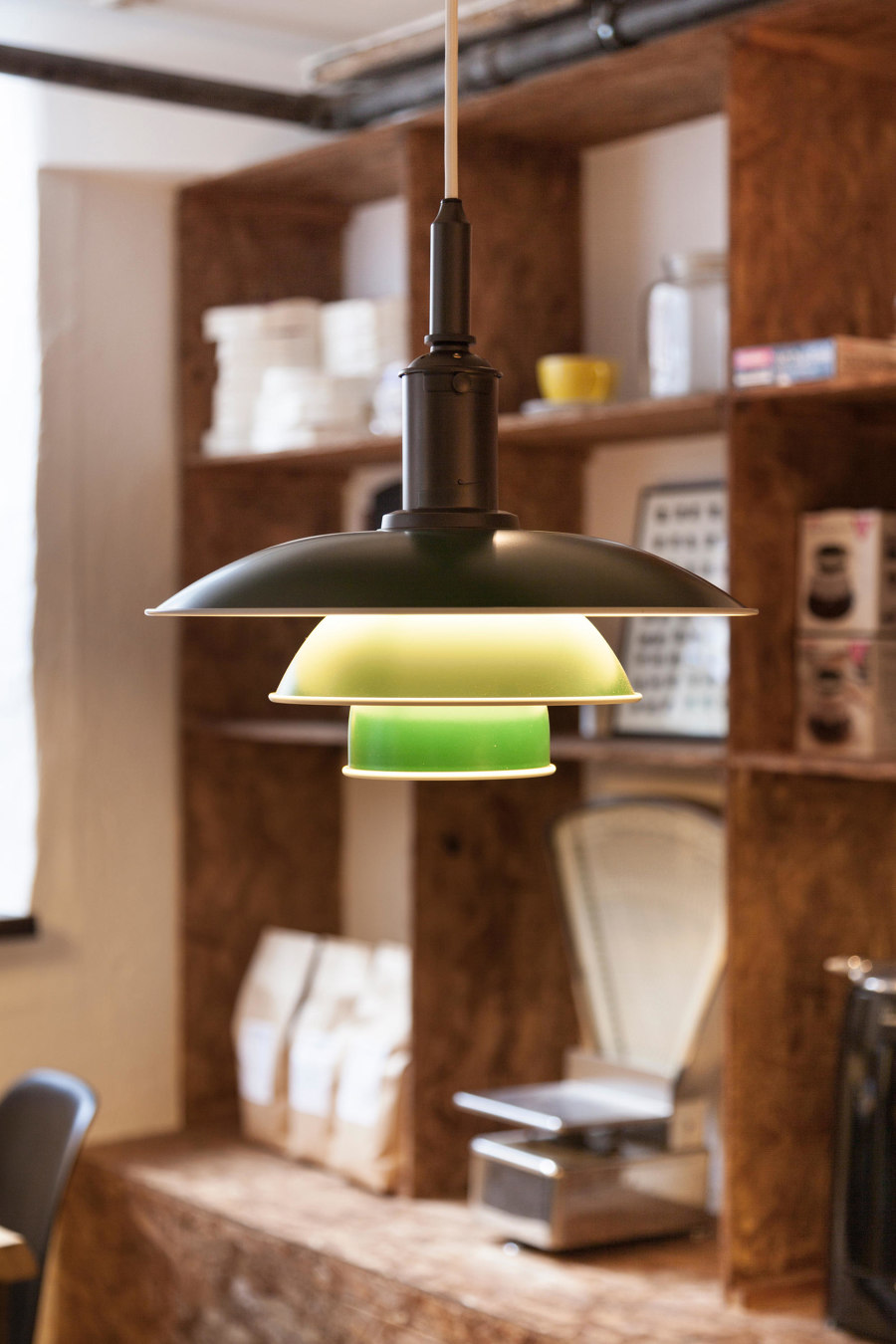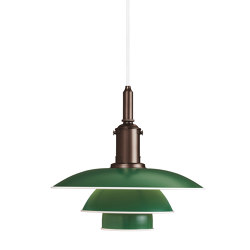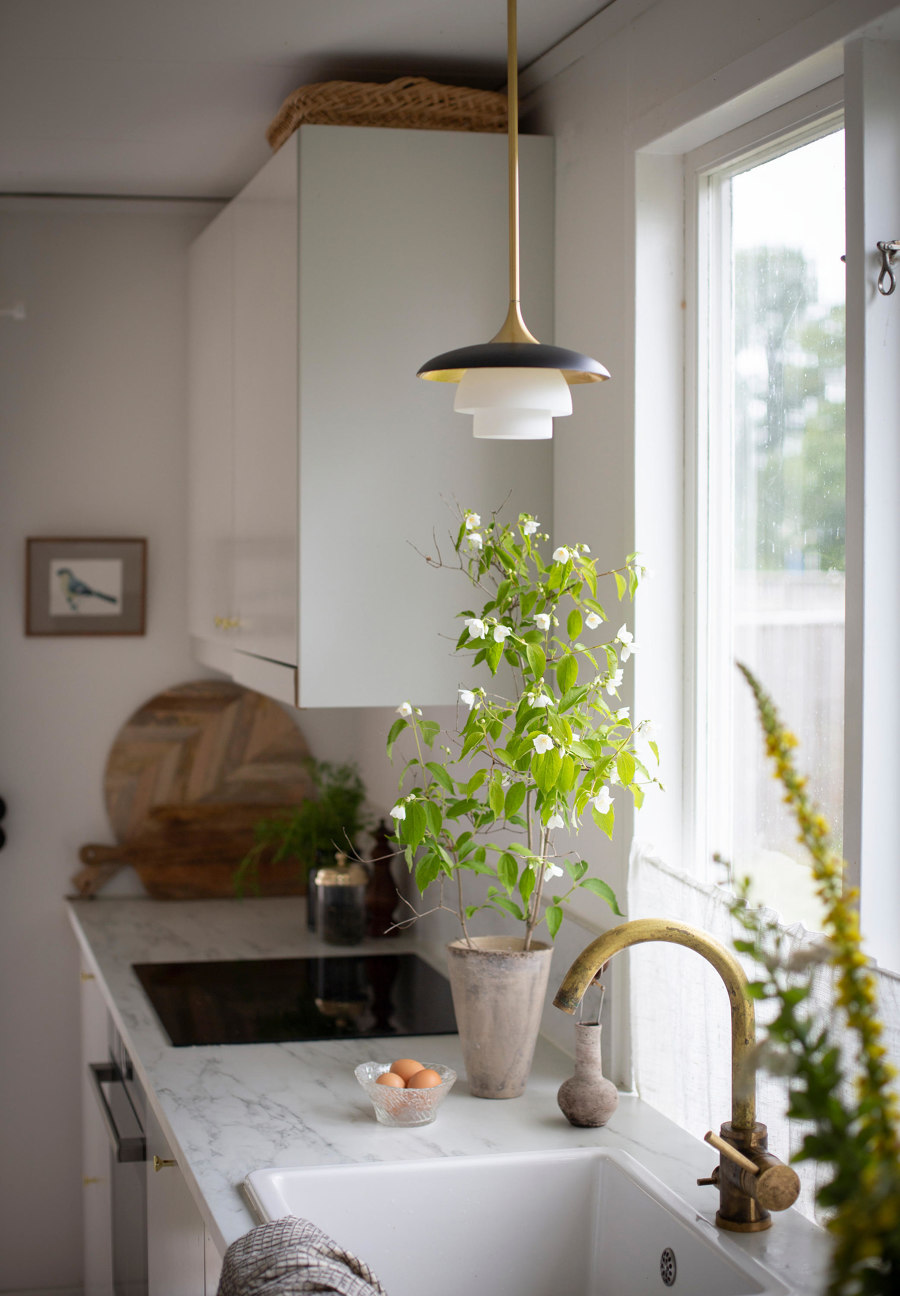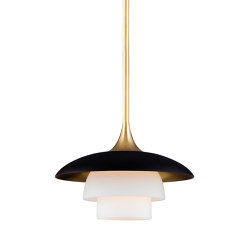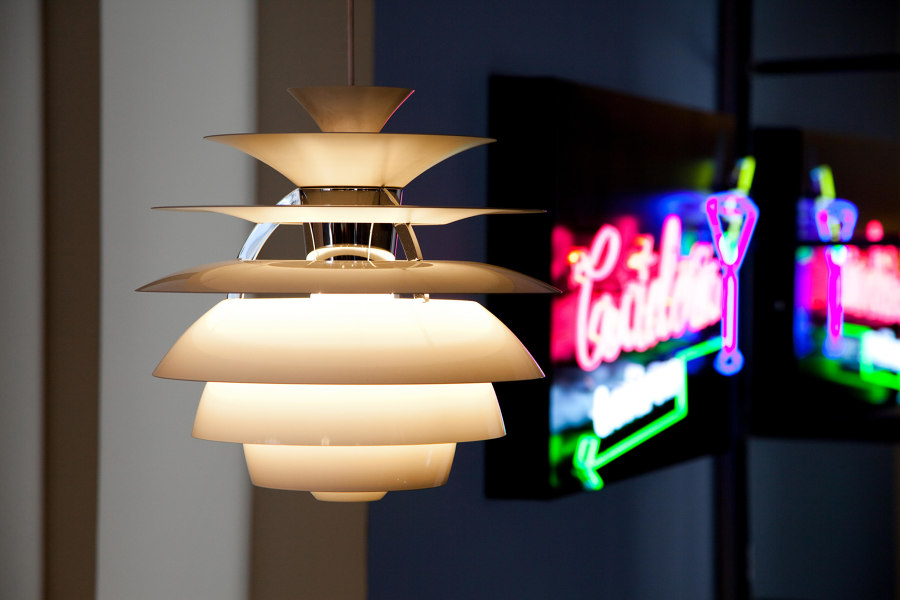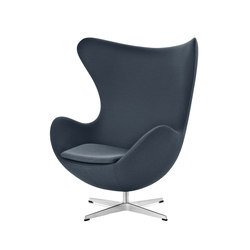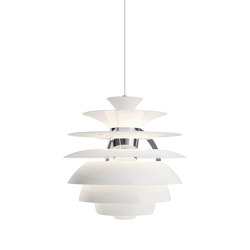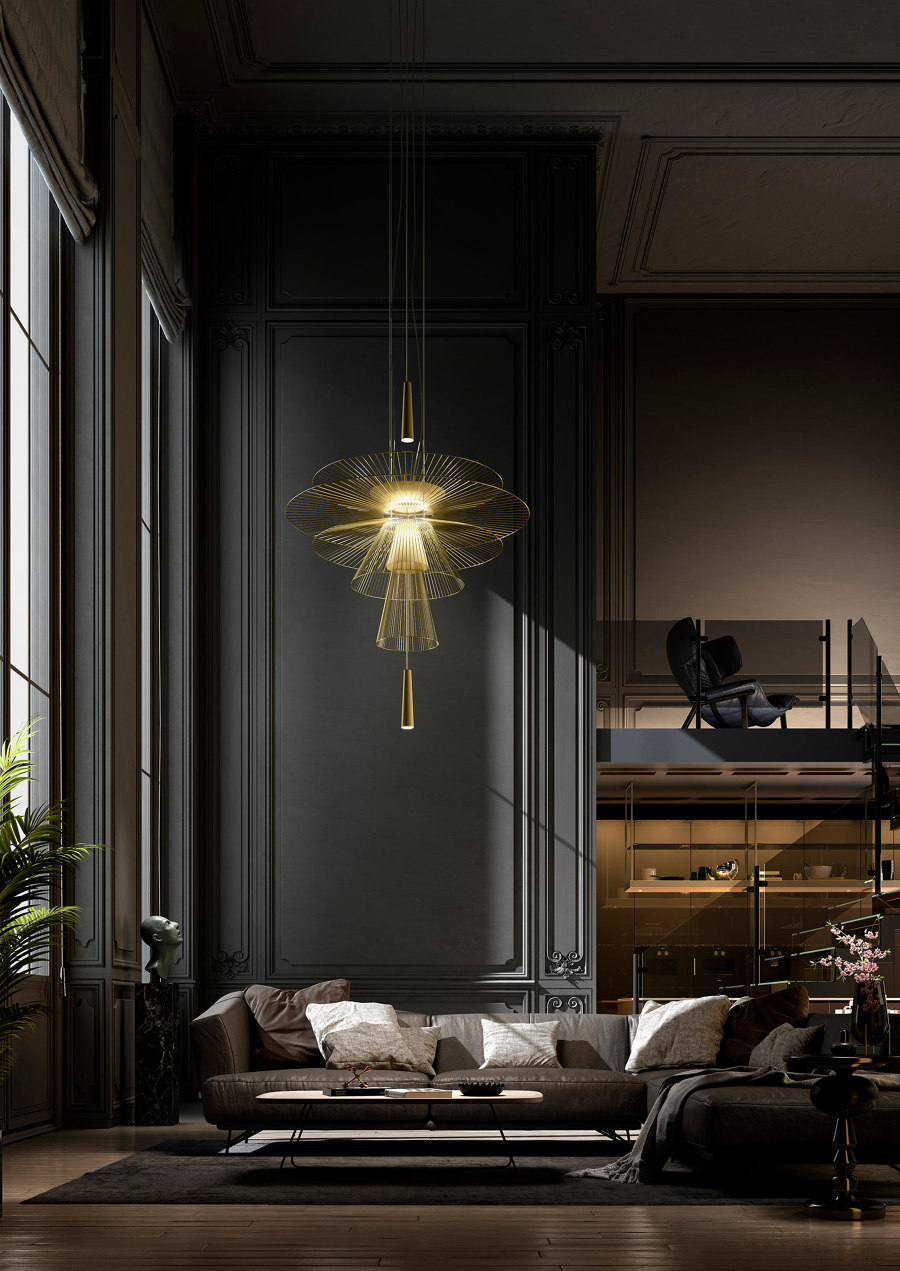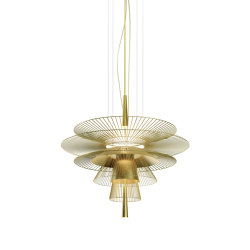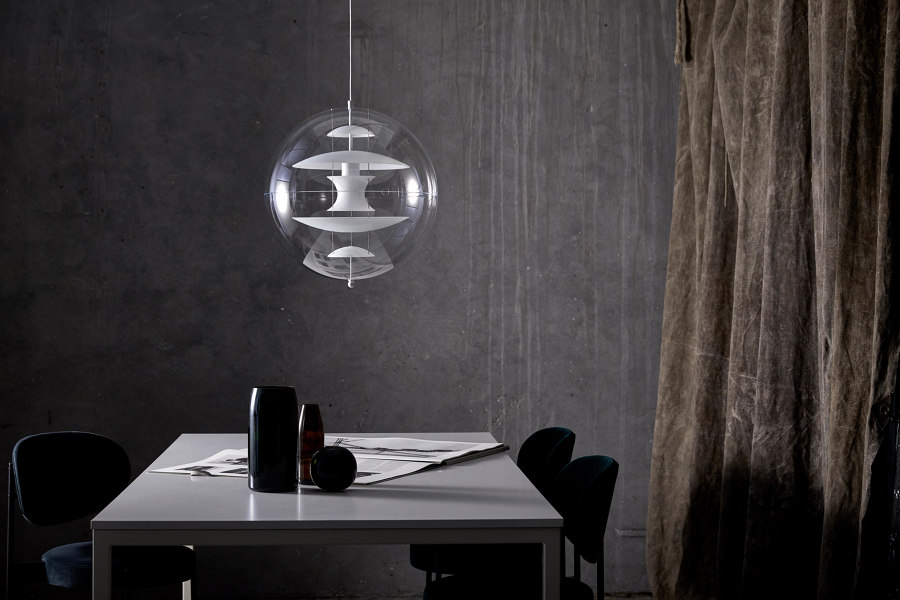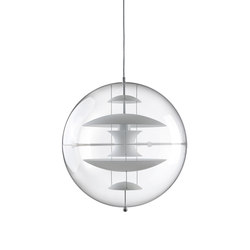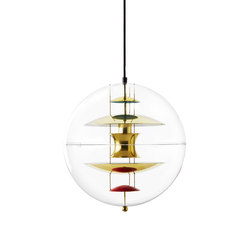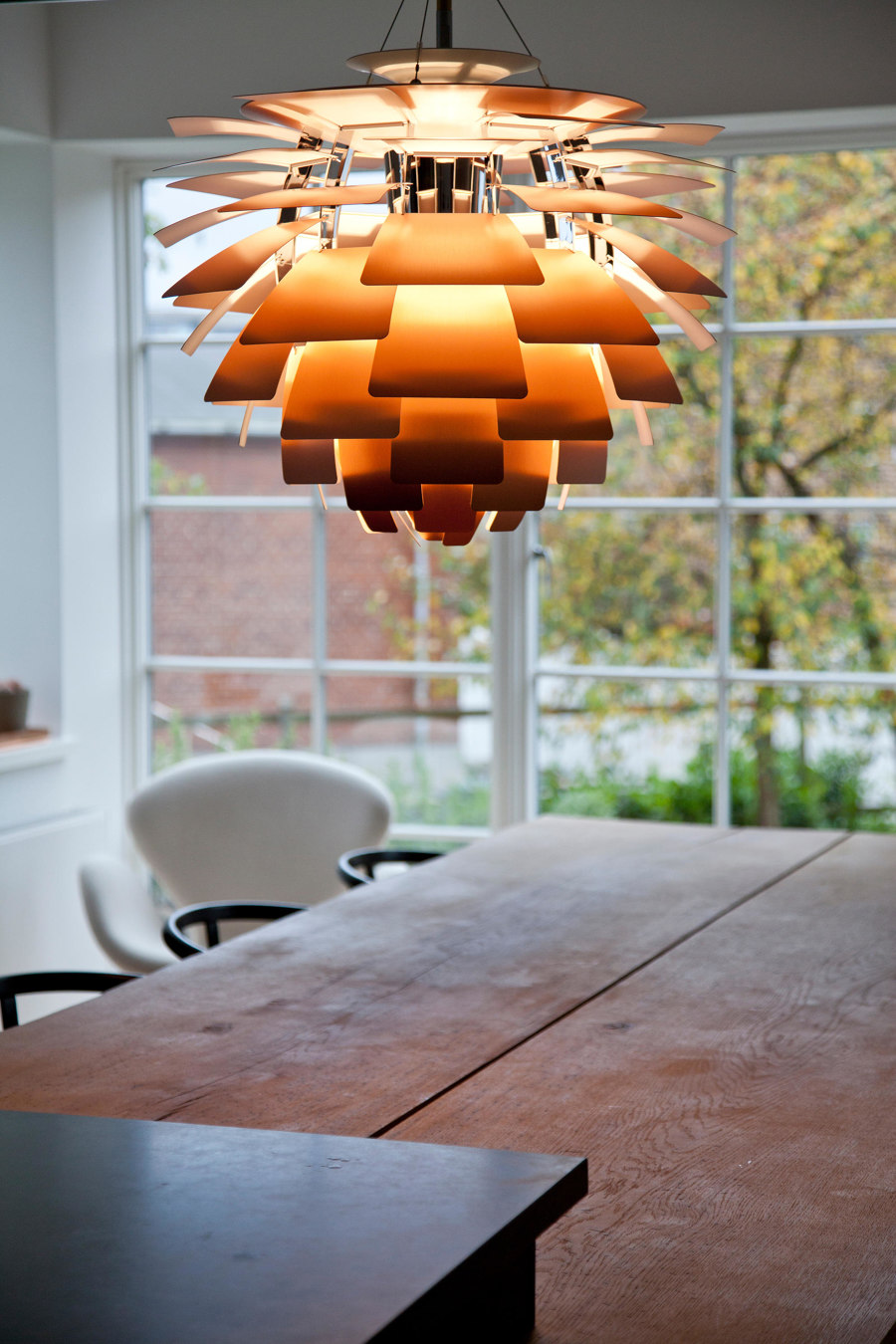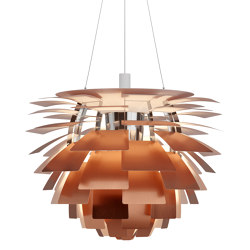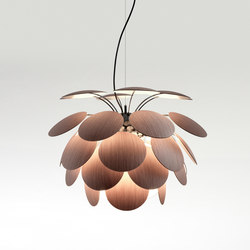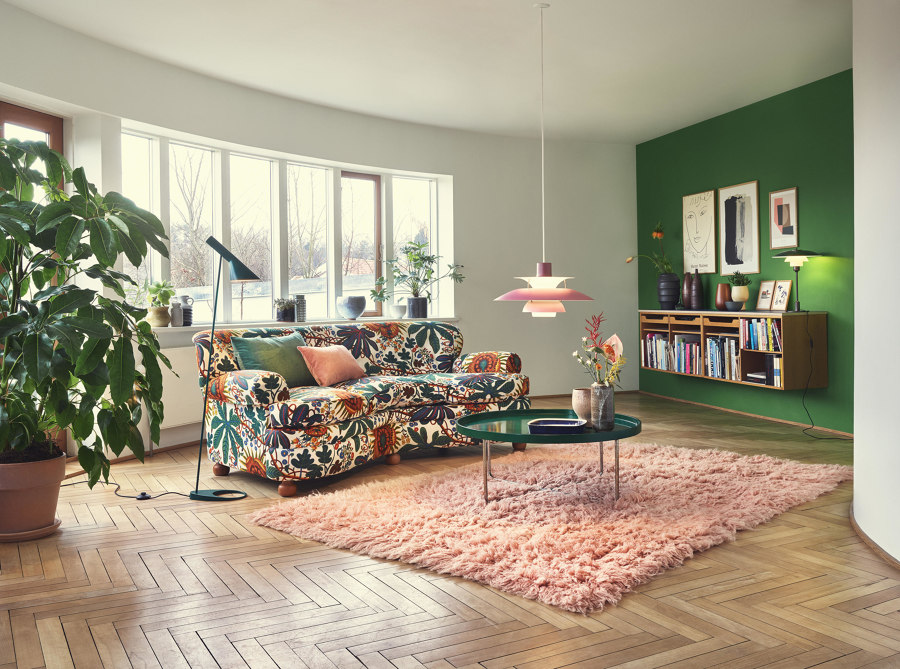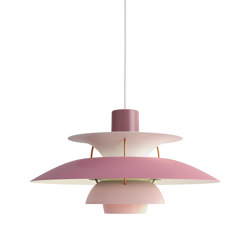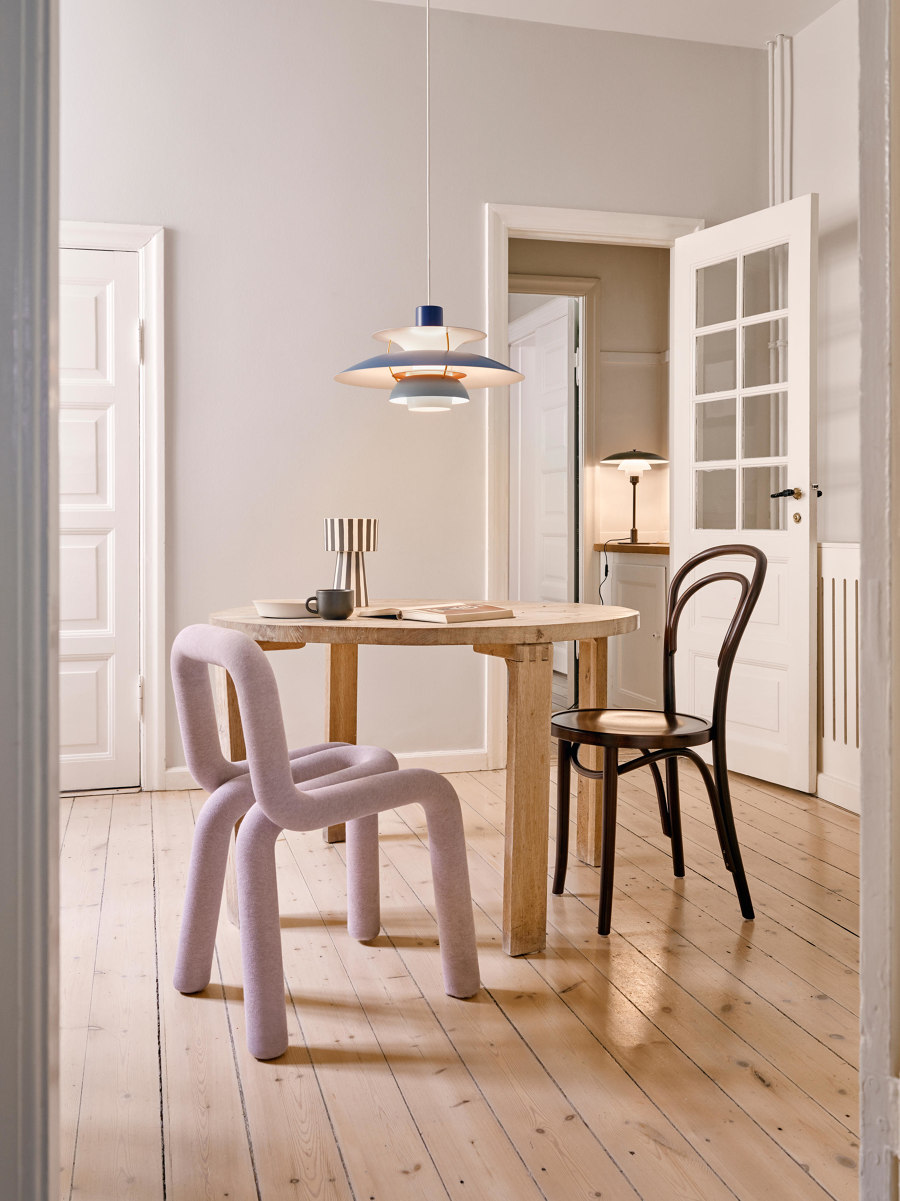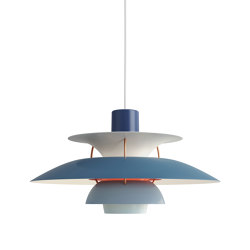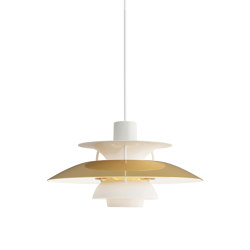Louis Poulsen PH5 pendant lamp: the history of the three-shade light
Scritto da James Wormald
07.07.23
Created by Poul Henningsen for Louis Poulsen, the story of the iconic PH5 pendant lamp is one of experimental science, and continues to guide both lighting and interior designers to this day.
Louis Poulsen’s eponymous Poul Henningsen-designed PH5 pendant lamp projects varied levels of glare-free downward light via three lower shades, while softly illuminating itself with a curved top shade

Louis Poulsen’s eponymous Poul Henningsen-designed PH5 pendant lamp projects varied levels of glare-free downward light via three lower shades, while softly illuminating itself with a curved top shade
×Light and dark. Day and night. On and off.
As objects of duality, the form and function of lighting pieces are definitively split. In daylight, the lighting fixture is just a functionless piece of decoration, requiring high-level aesthetic qualities to make an impression. This form, however, directly affects function once the lamp comes alive in darkness, sculpting and directing light to create an alternative environment of its own.
PH5 provides glare-free downlight as well as diffused lateral light to effectively illuminate itself
The iconic PH5 pendant lamp, from Danish manufacturer Louis Poulsen, completes the circle by using the light’s function to highlight its form. Using the careful arrangement of four shades of differing size, shape and angle, PH5 provides glare-free downlight as well as diffused lateral light to effectively illuminate itself, forming the basis of an unchanged design that’s remained consistently popular for over 60 years. But first, let’s go back to the beginning.
Designer of the iconic PH5 pendant light, along with the rest of his PH lighting family for Louis Poulsen, Poul Henningsen (top), and the PH5 light itself (bottom)
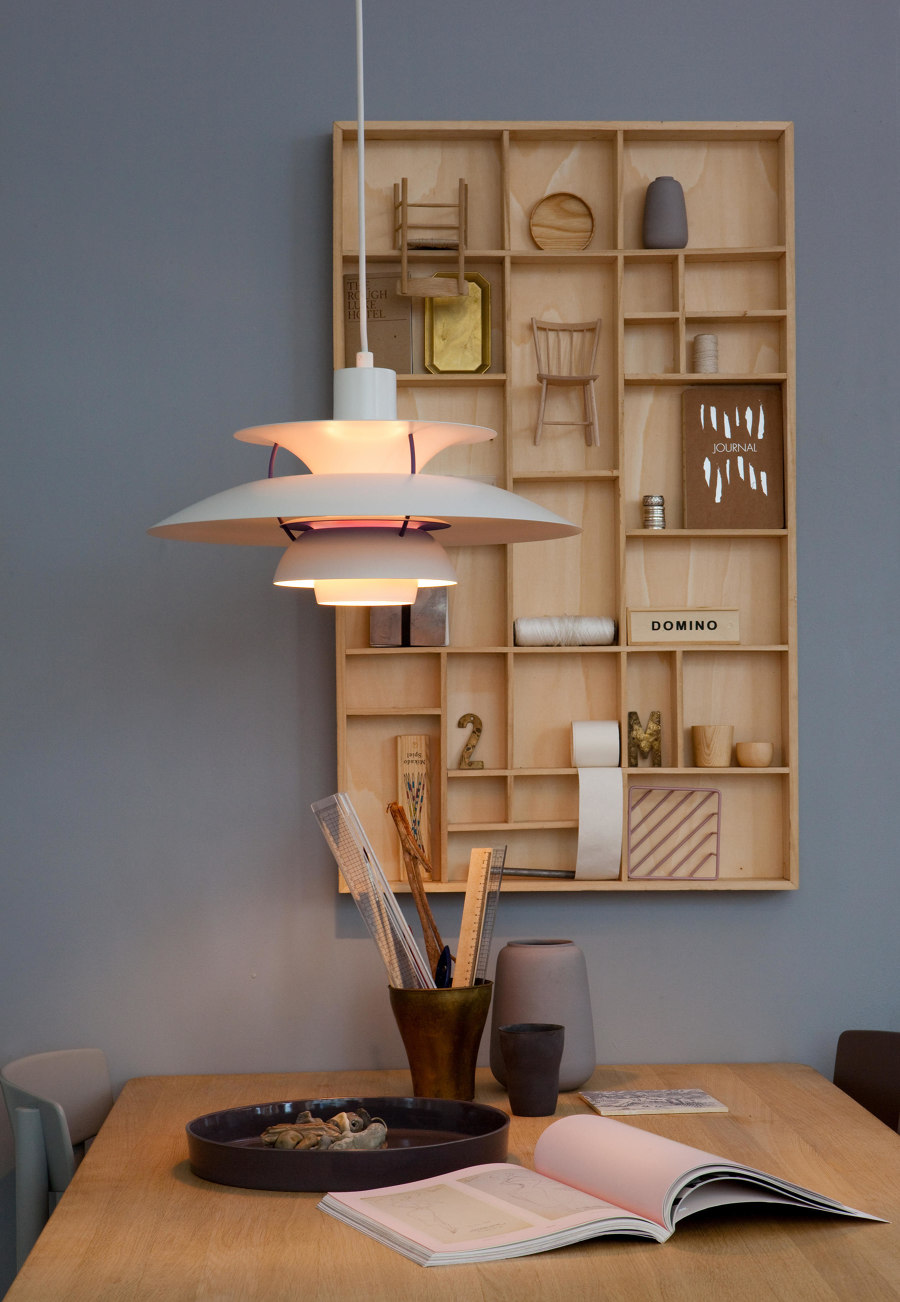
Designer of the iconic PH5 pendant light, along with the rest of his PH lighting family for Louis Poulsen, Poul Henningsen (top), and the PH5 light itself (bottom)
×Louis Poulsen and Poul Henningsen partnership
Louis Poulsen is an almost 150-year-old lighting manufacturer with a catalogue of products from a list of who’s who of product design, including Arne Jacobsen and Oki Sato. But it’s the brand’s iconic PH family – from titular designer Poul Henningsen – that remains the firm’s most well-known product line to this day.
The Paris lamp’s shades were shaped, sized and positioned specifically to order and distribute light more evenly
The manufacturer and designer’s first collaboration, the Paris lamp, was a six-shaded experiment in light sculpture. Having won a design competition to work on the project, Henningsen’s Paris lamp was a design competition entry itself, part of the International Exhibition of Modern Decorative and Industrial Arts. The Paris lamp’s shades were shaped, sized and positioned specifically to order and distribute light more evenly.
The Paris lamp would go on to win Gold in the competition, but the designer-manufacturer pairing was only looking forward, and over the next few years would go on to use the same multi-shade concept to create what is perhaps their biggest legacy. The three-shade lamp system.
A PH 3.5/3 three-shade lamp (top), Hudson Valley Lighting’s Barron pendant homage (middle) and El Pintón restaurant with similar three-shade pendants (bottom). Photo: Juan Delgado (bottom)
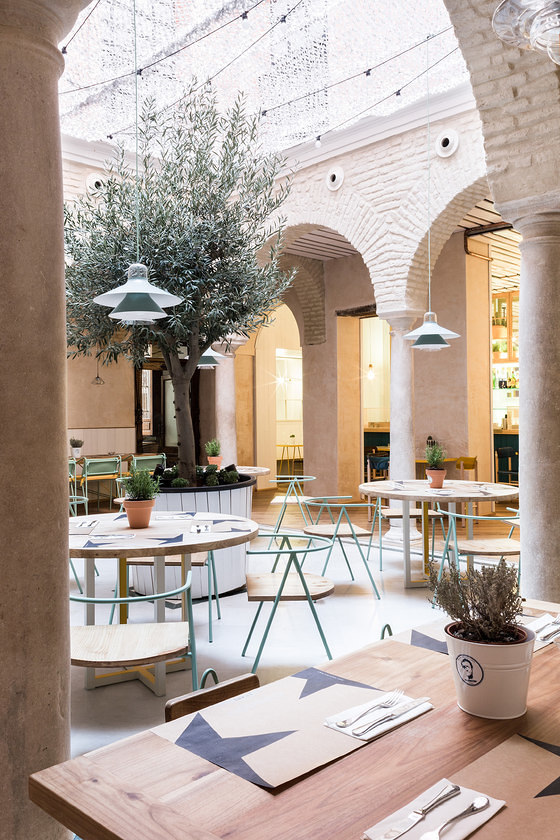
A PH 3.5/3 three-shade lamp (top), Hudson Valley Lighting’s Barron pendant homage (middle) and El Pintón restaurant with similar three-shade pendants (bottom). Photo: Juan Delgado (bottom)
×Poul Henningsen’s three-shade lamp system
The complex but also simple system sees multiple light formats with different levels of light distribution determined by the size of each shade and the relationship between them. Originally created with shade sizes following a geometric sequence of 4:2:1, the light would feature a top shade twice as wide as its middle, which itself was twice the size of the bottom. The system came into its own, however, when later formatted with a 3:2:1 arithmetic sequence.
This 3:2:1 format would go on to spawn multiple size, colour and material iterations, and continues to be reflected in contemporary products to this day, such as in the Barron Pendant by Hudson Valley Lighting, or seen here at El Pintón restaurant in Sevilla, Spain. Poul Henningsen himself, however, was not finished with the concept, and would go on to experiment further and further with multi-shade pendant designs.
Henningsen’s PH Snowball with shades of increasing and decreasing diameter (top) and the mid-century CW Apartment with PH Snowball and Egg chair (bottom). Photo: Carlo Baroni (bottom)
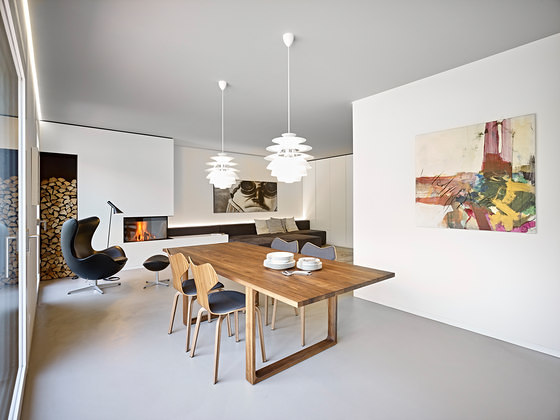
Henningsen’s PH Snowball with shades of increasing and decreasing diameter (top) and the mid-century CW Apartment with PH Snowball and Egg chair (bottom). Photo: Carlo Baroni (bottom)
×Louis Poulsen’s PH family
By simply continuing the arithmetic sequence up and then back down, and gradually adjusting the shade curve, Henningsen created the PH Snowball. Highlighting both the fixture’s retained popularity, and its place within the mid-century hall of fame, the PH Snowball can be found in many contemporary interior projects such as Burnazzi Feltrin Architetti’s CW Apartment, alongside other heavy hitters like Fritz Hansen’s Egg chair by Arne Jacobsen.
Forestier’s wireframe Gravity pendant lamp (top), with arithmetic and geometric style and Verpan’s VP Globe pendant (middle, bottom) exhibiting its sculptural form in a glass dome
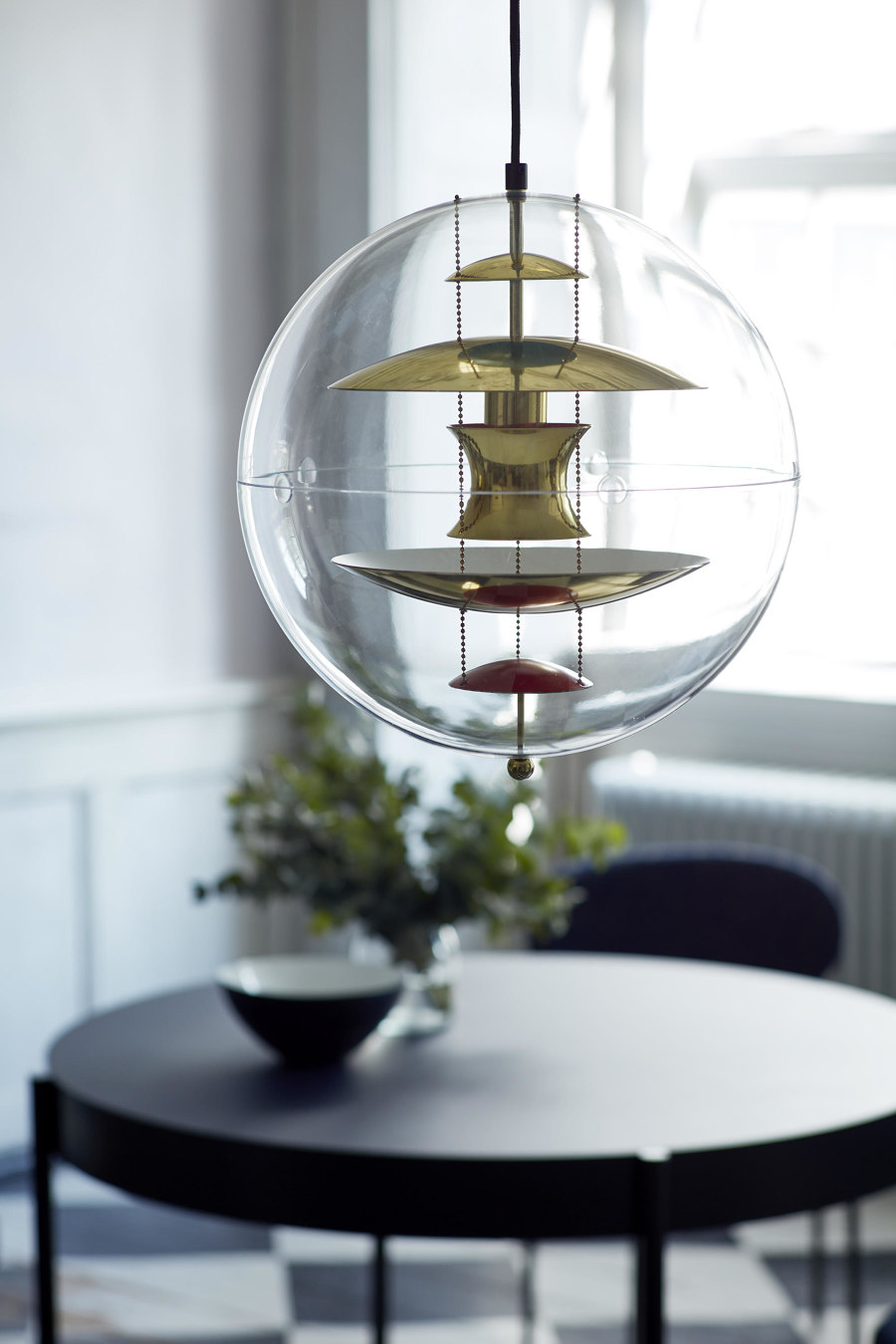
Forestier’s wireframe Gravity pendant lamp (top), with arithmetic and geometric style and Verpan’s VP Globe pendant (middle, bottom) exhibiting its sculptural form in a glass dome
×With similar arithmetic and geometric styles, meanwhile, this Gravity pendant lamp from Forestier uses wireframe shades to create dramatic and exciting patterns of light and shadow, while the VP Globe pendant from Verpan symmetrically collects its shades together, before goldfish-bowling the entire contraption in a sculptural presentation.
Louis Poulsen and Poul Henningsen’s three-dimensional shaded Artichoke light (top) and Marset’s graphically floral, disc-shaded Discocó Wood, designed by Christophe Mathieu (bottom)
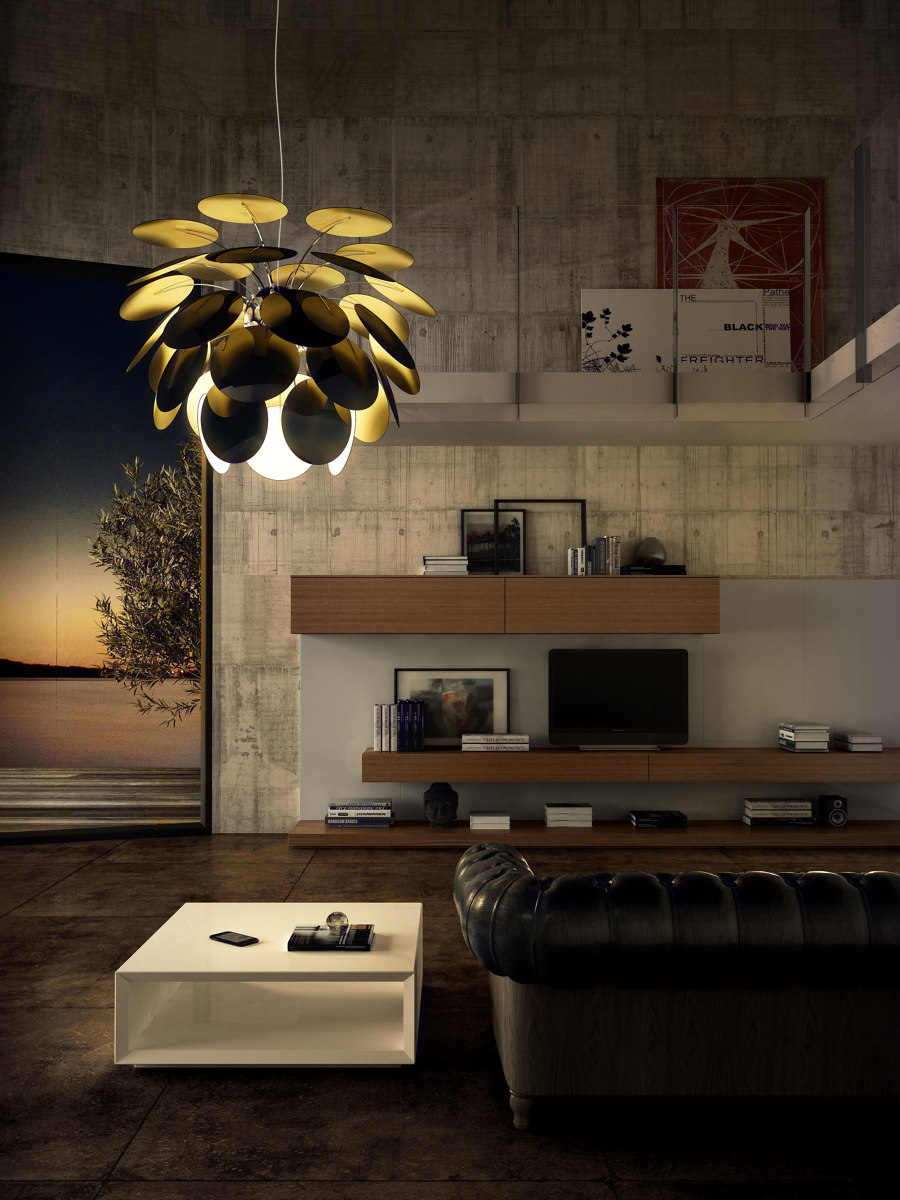
Louis Poulsen and Poul Henningsen’s three-dimensional shaded Artichoke light (top) and Marset’s graphically floral, disc-shaded Discocó Wood, designed by Christophe Mathieu (bottom)
×After the PH Snowball, Louis Poulsen’s Artichoke lamp moved from one- to two-dimensional shade arrangements, with a more natural, feathered look. Artichoke and inspired modern iterations such as Marset’s Discocó use graphic shades to create contrasting areas of light and dark highlights, in intriguing floral constructions.
The Louis Poulsen PH5 pendant lamp’s customisability in both shade colour and material, is one of the features that’s allowed the everlasting design to remain as popular as it has for so long
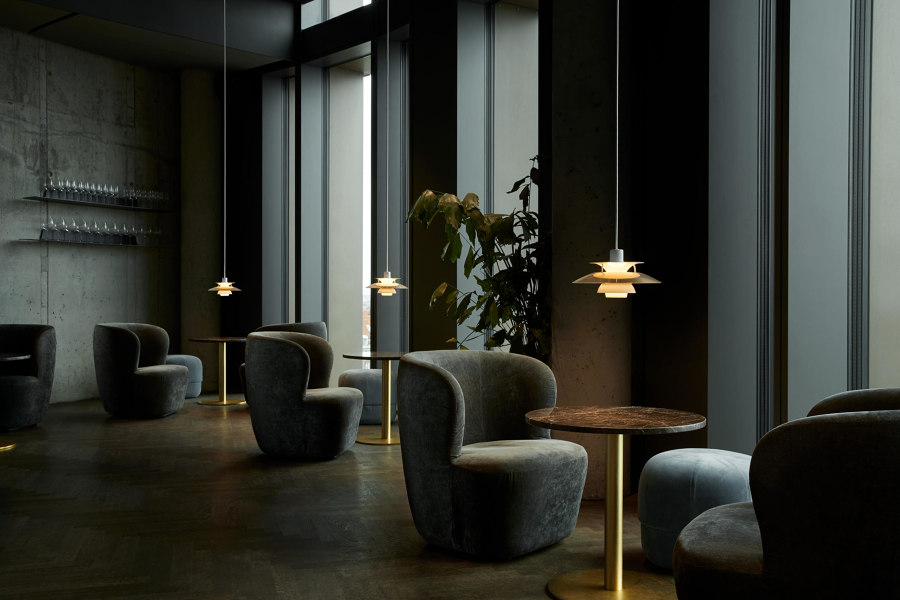
The Louis Poulsen PH5 pendant lamp’s customisability in both shade colour and material, is one of the features that’s allowed the everlasting design to remain as popular as it has for so long
×Louis Poulsen PH 5 lamp
After PH Snowball and PH Artichoke stepped out in both directions and dimensions, the PH5 pendant was a return to a simpler form, and the three-shade system. This time, by adding a fourth concave shade to the top of the stack, lateral light is distributed evenly over the structure itself. To celebrate the continued lasting legacy and popularity of the PH5 pendant, Louis Poulsen continues to release further versions of the light in various contrasting colours and materials, taking advantage of its shapely form.
© Architonic

